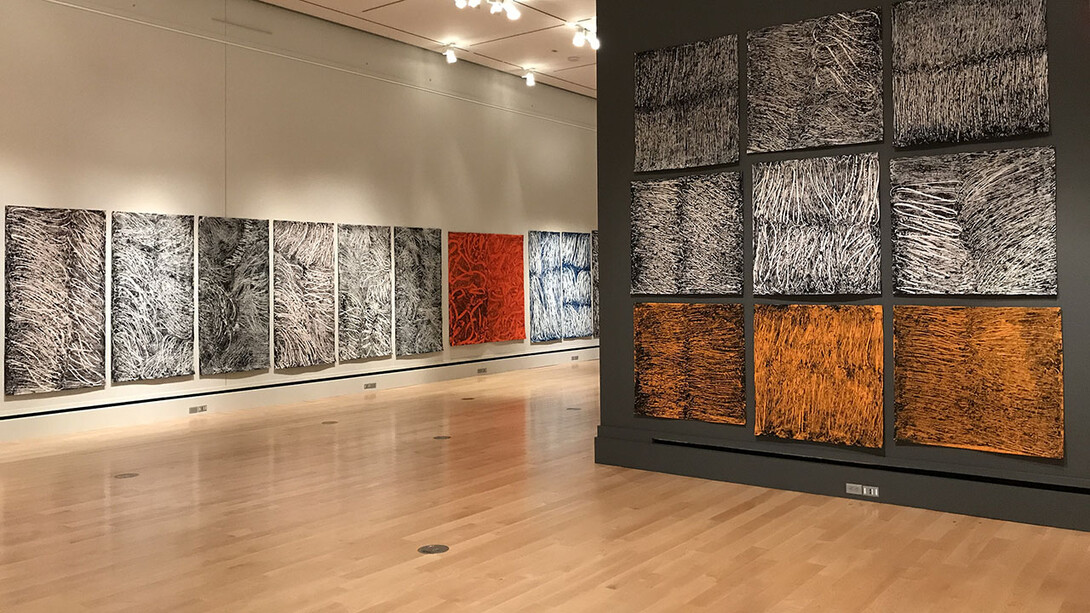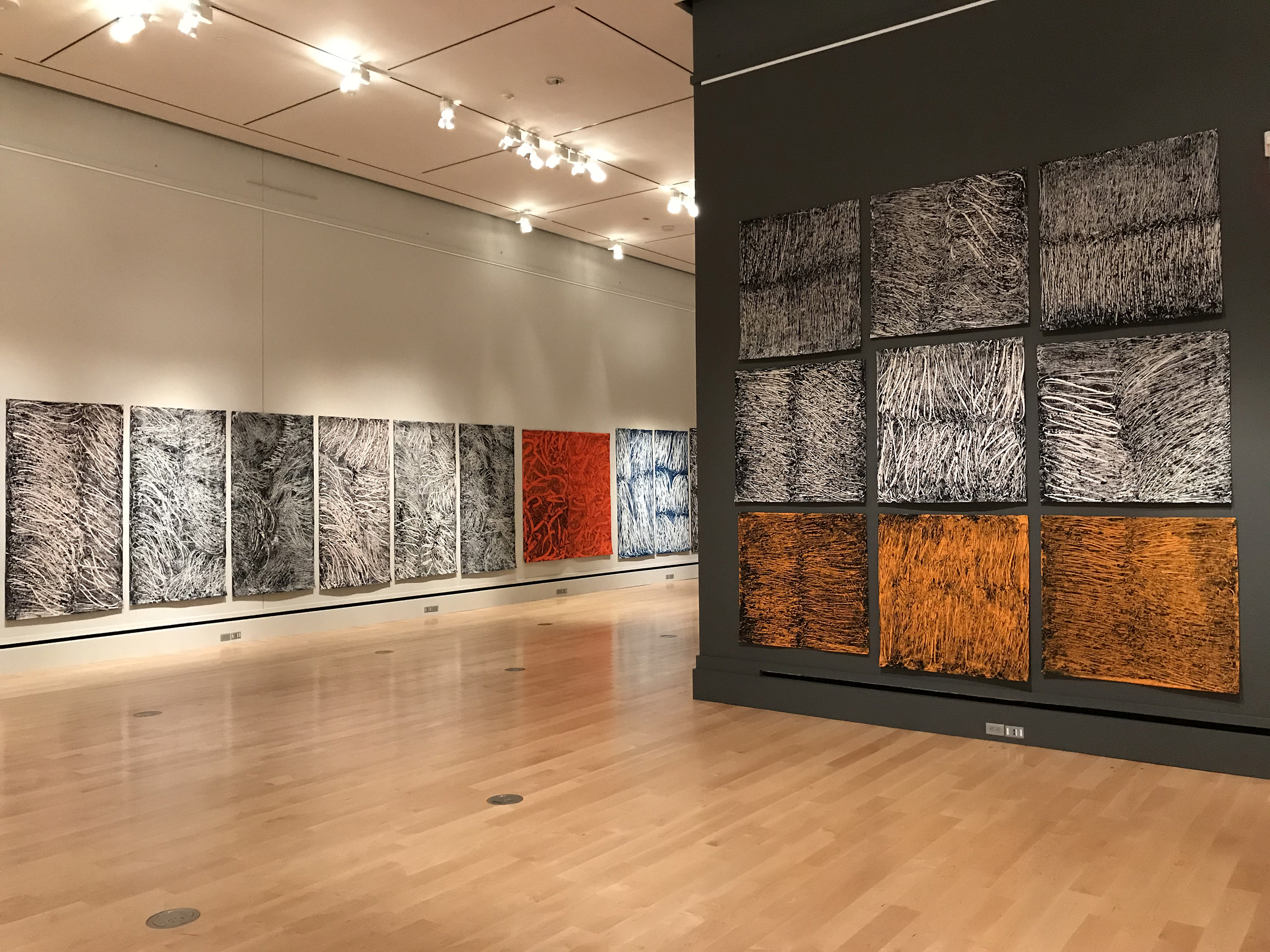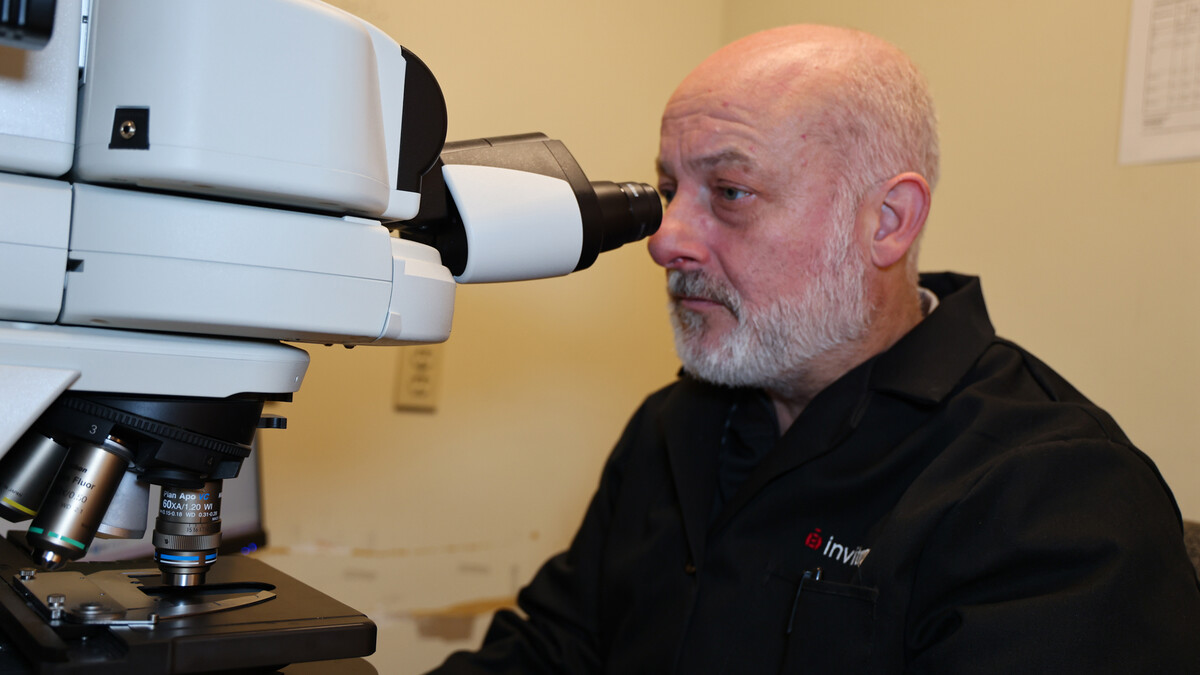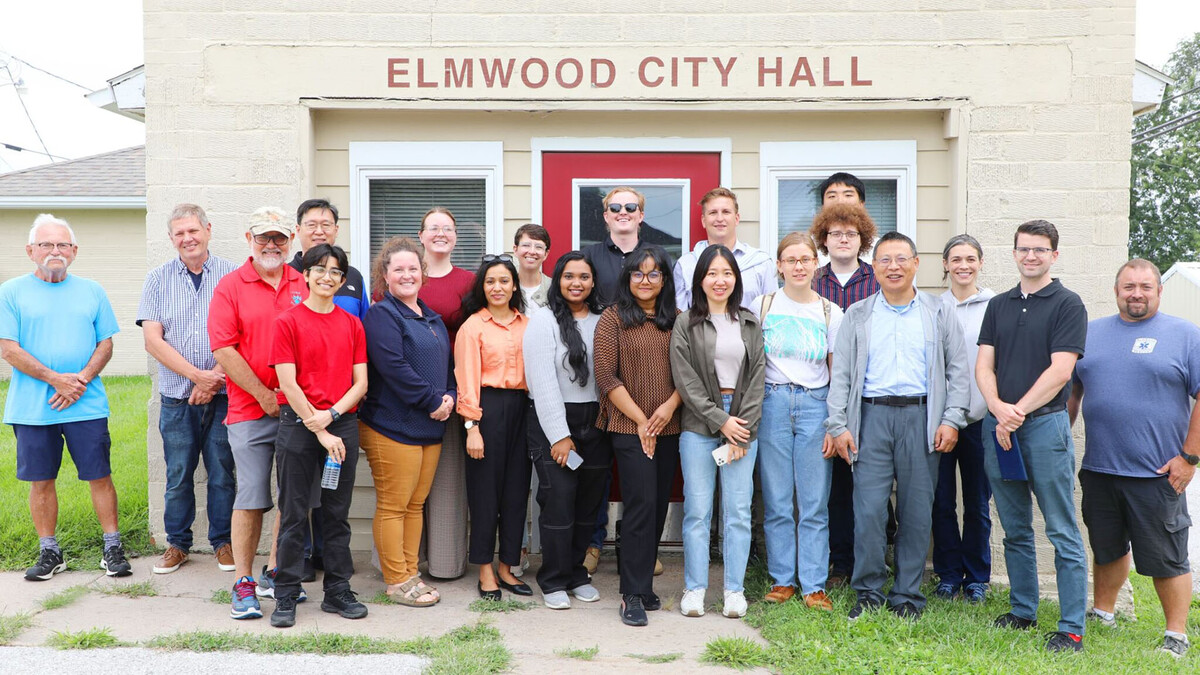
The International Quilt Museum will reopen its doors to the public from 10 a.m. to 4 p.m. Tuesdays through Saturdays beginning Aug. 4.
As with the rest of campus, visitors are asked to wear face masks and observe physical distancing. The museum has additional safety precautions in place, including limited building occupancy, hand sanitation stations and increased cleaning at touchpoint areas.
The museum will also continue to offer virtual programming on its website and social media platforms, including tours of galleries and lectures. For more information on upcoming programs, click here.
As it reopens, the museum has a new roster of exhibitions in the galleries. These include “Nancy Crow | Drawings: Monoprints and Riffs,” “For the Love of Gaia,” “Glasnost and Folk Culture” and “Eliza Hardy Jones: Song Quilts.”
On display until March 7, “Nancy Crow | Drawings: Monoprints and Riffs” showcases two types of contemporary quiltmaking created by the artist between 2011-2020. During this time, Crow focused on monoprints and machine-pieced quilts. All are explorations of color and balance, form and texture, visual tension and meaning. Crow considers these works to be quilted drawings.
Crow has been a leader in contemporary quiltmaking since the 1970s. In 1999, she was elected a fellow of the American Craft Council, and in 2019, she received the Master of the Medium Award from The James Renwick Alliance, the support arm of The Renwick Gallery, Smithsonian Institution, Washington, D.C. Crow lives in Ohio with her husband, John Stitzlein.
“For the Love of Gaia” features environmentally focused pieces from artists around the world. It is on display through Nov. 25.
The exhibition is guest-curated by Luana Rubin, president and co-owner of eQuilter.com, an online fabric retailer in Boulder, Colorado. Two percent of all eQuilter sales go to charities focused on the environment and human rights, and the retailer has raised $1.7 million over 20 years. Rubin has worked as a designer in the textile, garment and quilt industries since 1980. She is a chairholder for the international trend forecasting organization the Color Marketing Group.
“Glasnost and Folk Culture” features the results of a multi-year project between American and Russian quiltmakers. The quilts, which are recent acquisitions to the museum’s collection, are on display through Feb. 14.
In 1994, a delegation of three American quilt teachers traveled to Russia at the invitation of a women’s group. They shared their expertise as well as the dozens of yards of fabric they brought with them — a welcome gift since everyday supplies were scarce and expensive in post-Soviet Russia. Staying with local families, the Americans learned about daily life, local traditions and folklore. After the exchange, the Russian students continued to make quilts. In the late 1990s, they began to sell their creations in the United States with the help of cultural exchange organizations.
In “Eliza Hardy Jones: Song Quilts,” the musician and quiltmaker explores how short-lived experiences such as musical performances can be expressed in enduring artforms. The exhibit is on display until Nov. 1.
Jones traveled across the U.S. and Northwest Russia recording folk songs sung by women, which she then transcribed into written music. Next, she developed a notation method that translates pitch into color and rhythm into shape. The resulting quilts are “read” from top left to bottom right. Jones selected predominant colors and quilting patterns to reflect her impressions of the song, the singer and the experience of sharing music.
The International Quilt Museum houses the world’s largest publicly held quilt collection. Its mission is to build a global collection and audience that celebrate the cultural and artistic significance of quilts. Learn more.








